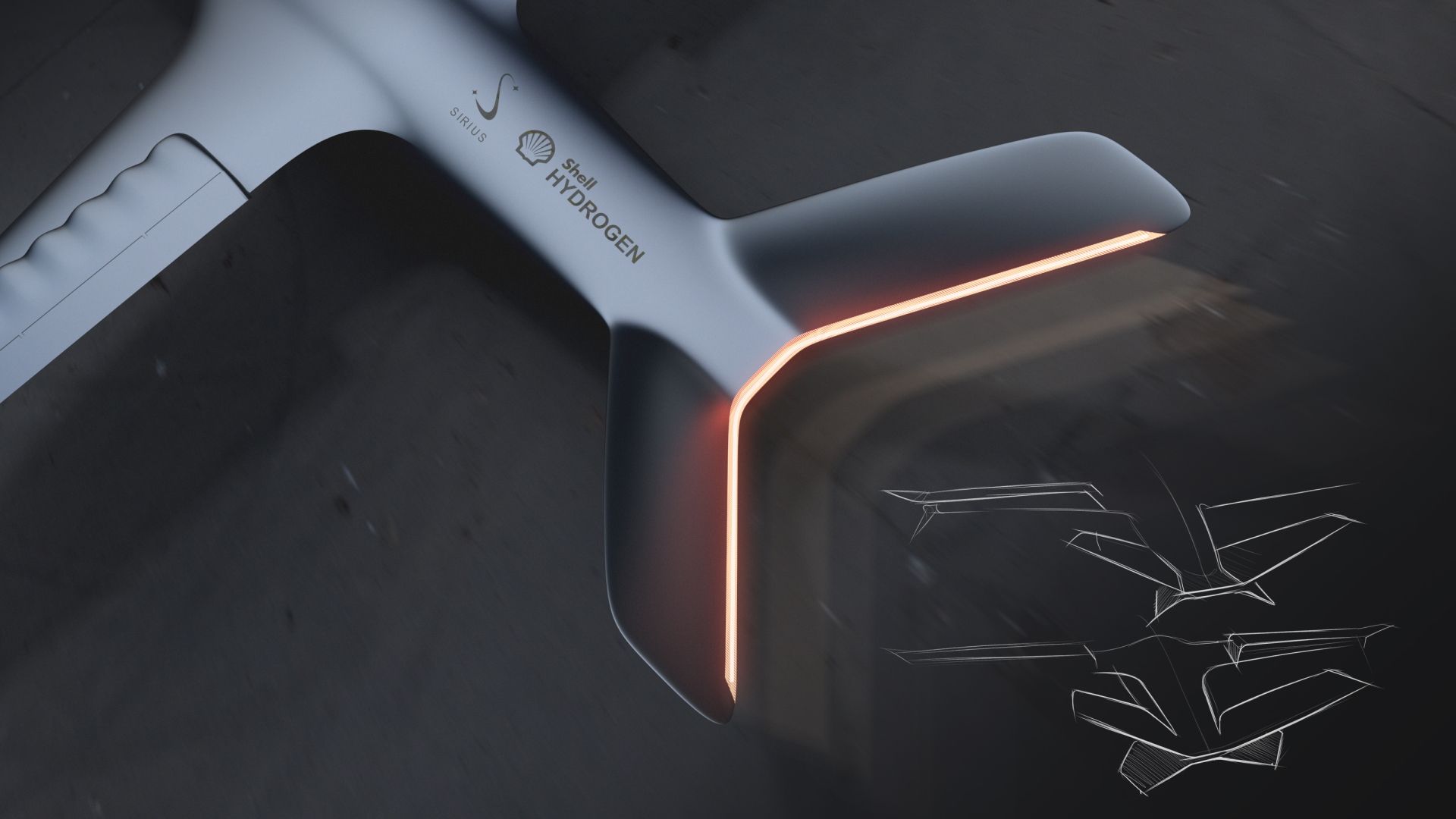 The Sirius Jet is a zero-emission aircraft that has no environmental impact.
The Sirius Jet is a zero-emission aircraft that has no environmental impact.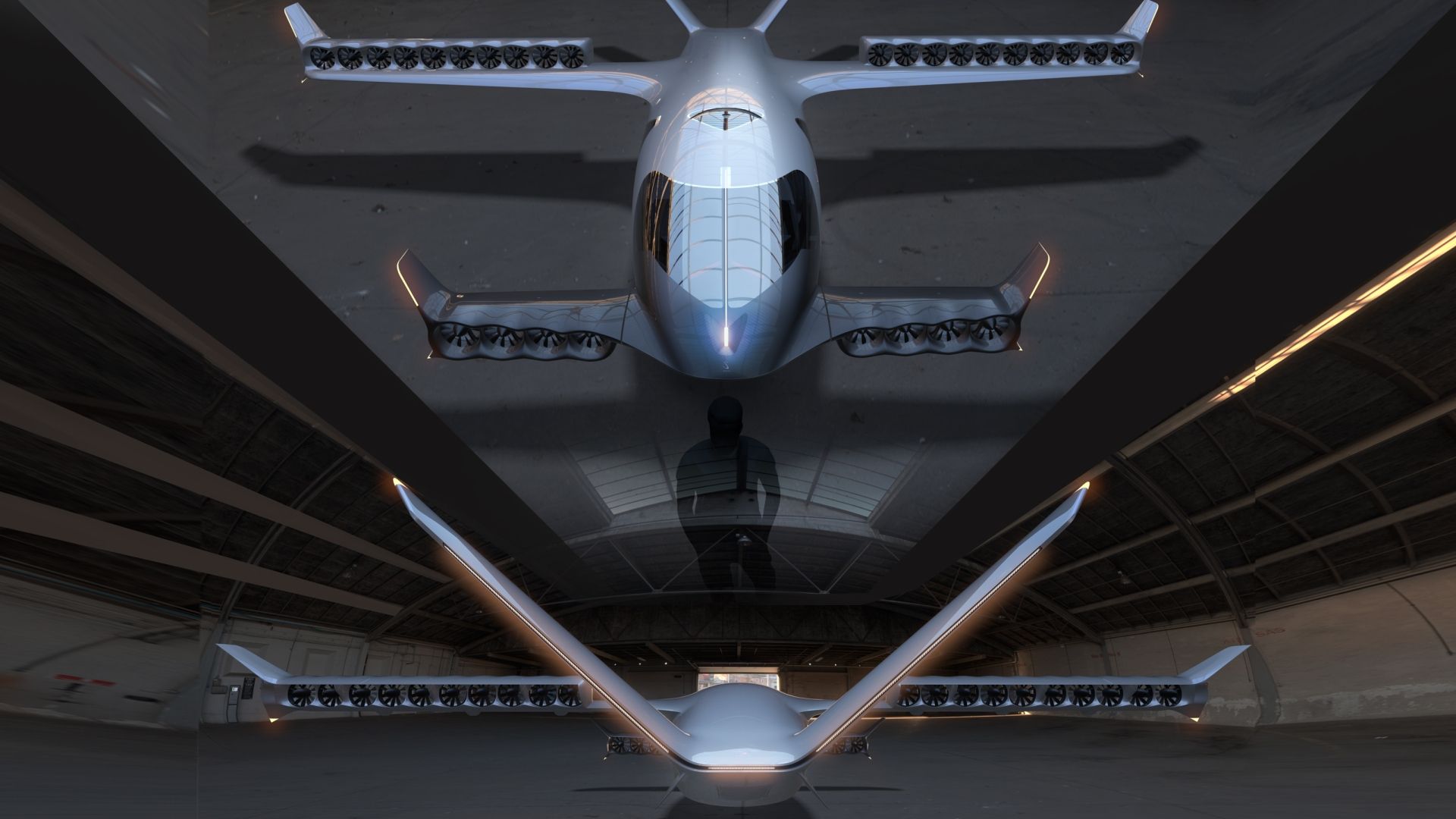 A captivating project for our team: Designing the future of lightweight structures in aviation.
A captivating project for our team: Designing the future of lightweight structures in aviation.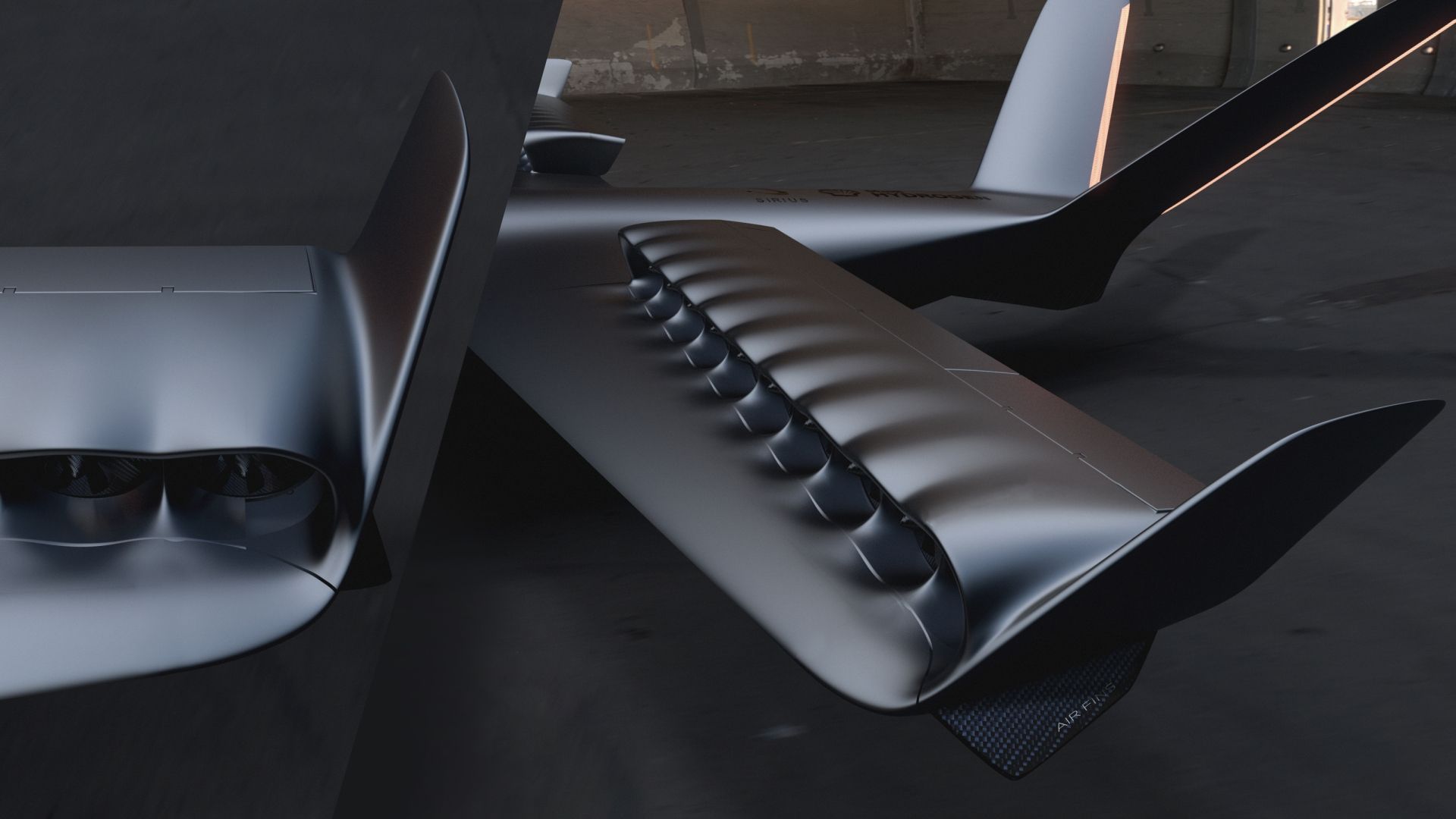 Sirius Jet: 28 ducted fans to reduce noise emission. 20 fans are located along the wings, 8 mounted in the canard. A separate electric motor drives each ducted fan.
Sirius Jet: 28 ducted fans to reduce noise emission. 20 fans are located along the wings, 8 mounted in the canard. A separate electric motor drives each ducted fan.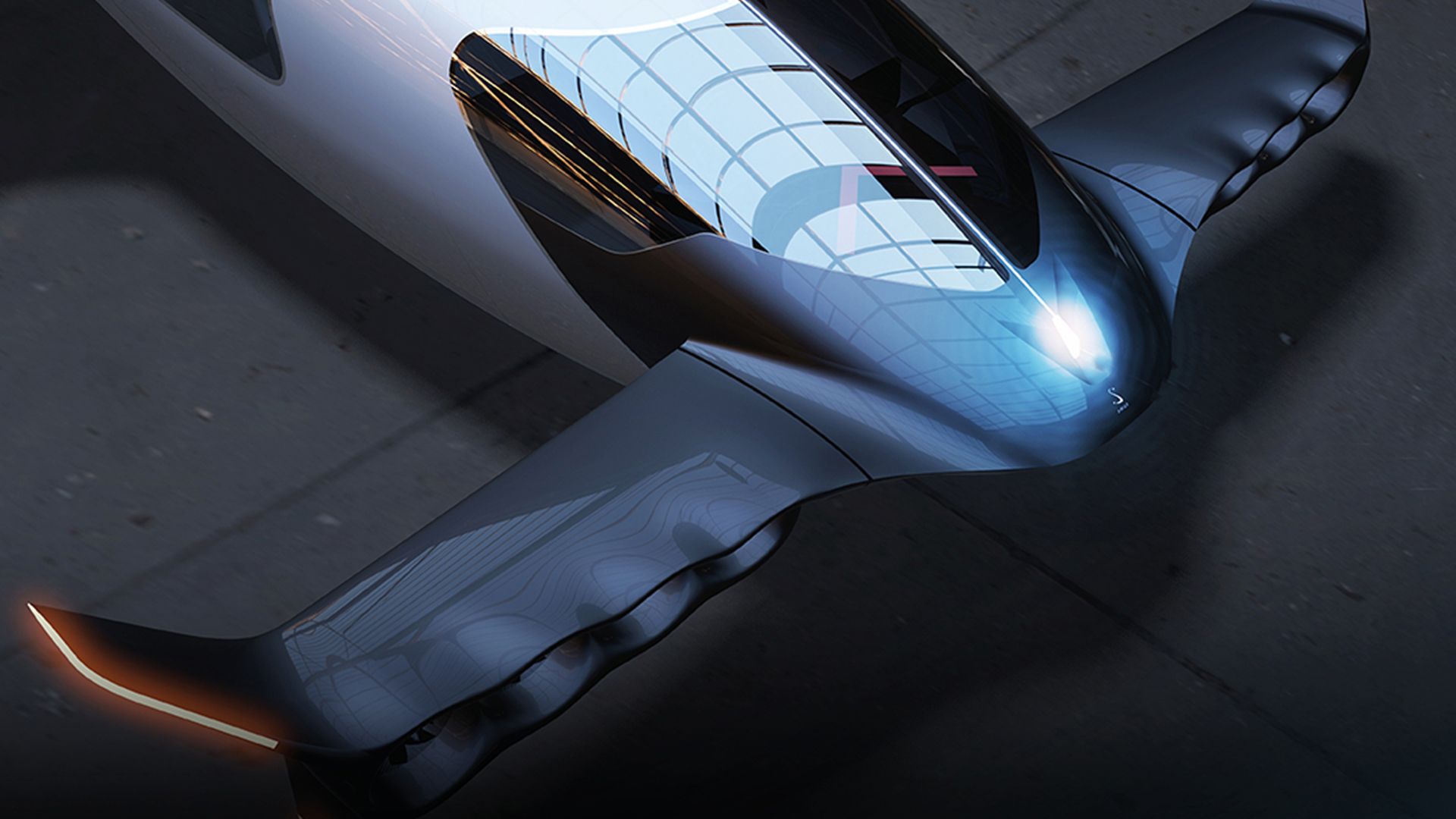 Bringing the company´s long history in space travel design to the ideation: Windows inspired by space capsules provide for exciting new travel experiences.
Bringing the company´s long history in space travel design to the ideation: Windows inspired by space capsules provide for exciting new travel experiences.
The Sirius Jet
Design for Hydrogen-Powered VTOL
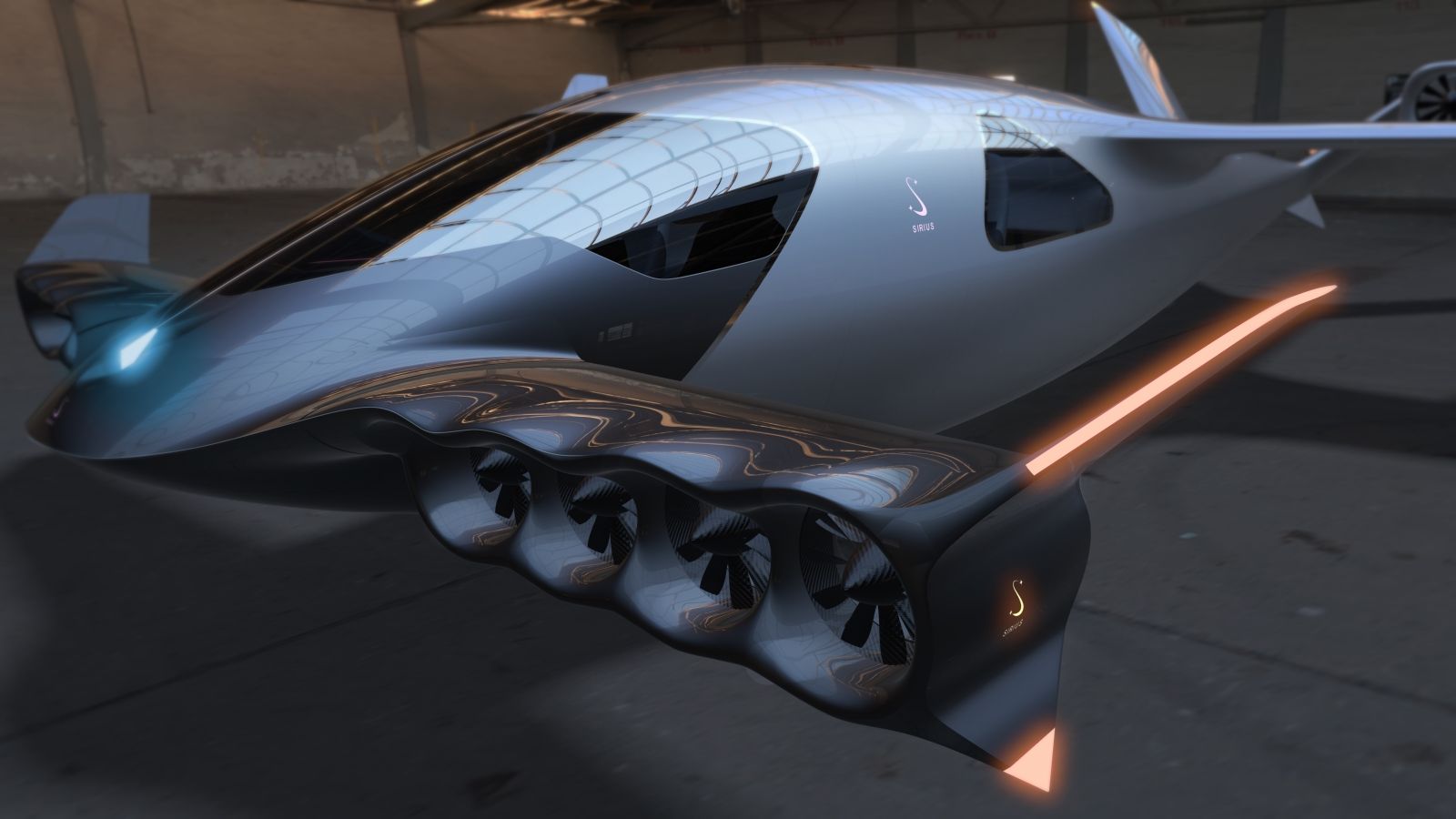
High-performance, zero-emission jets to launch in 2028
In 2023, nearly 1.3 billion passenger flights took off across the globe, with numbers expected to grow. Aircraft are currently responsible for 2.5% of global CO2 emissions, and this percentage is steadily increasing. In 2021, the aviation industry set itself a goal of reaching net-zero carbon emissions by 2050. Clean hydrogen could play a major role in reaching this ambitious goal. And by joining forces with Sirius Aviation to write a new, more sustainable chapter in aviation history, Designworks has now also become a partner in this mission to make air transportation fit for the future.
“The hydrogen engine: Humanity needs it right now.”
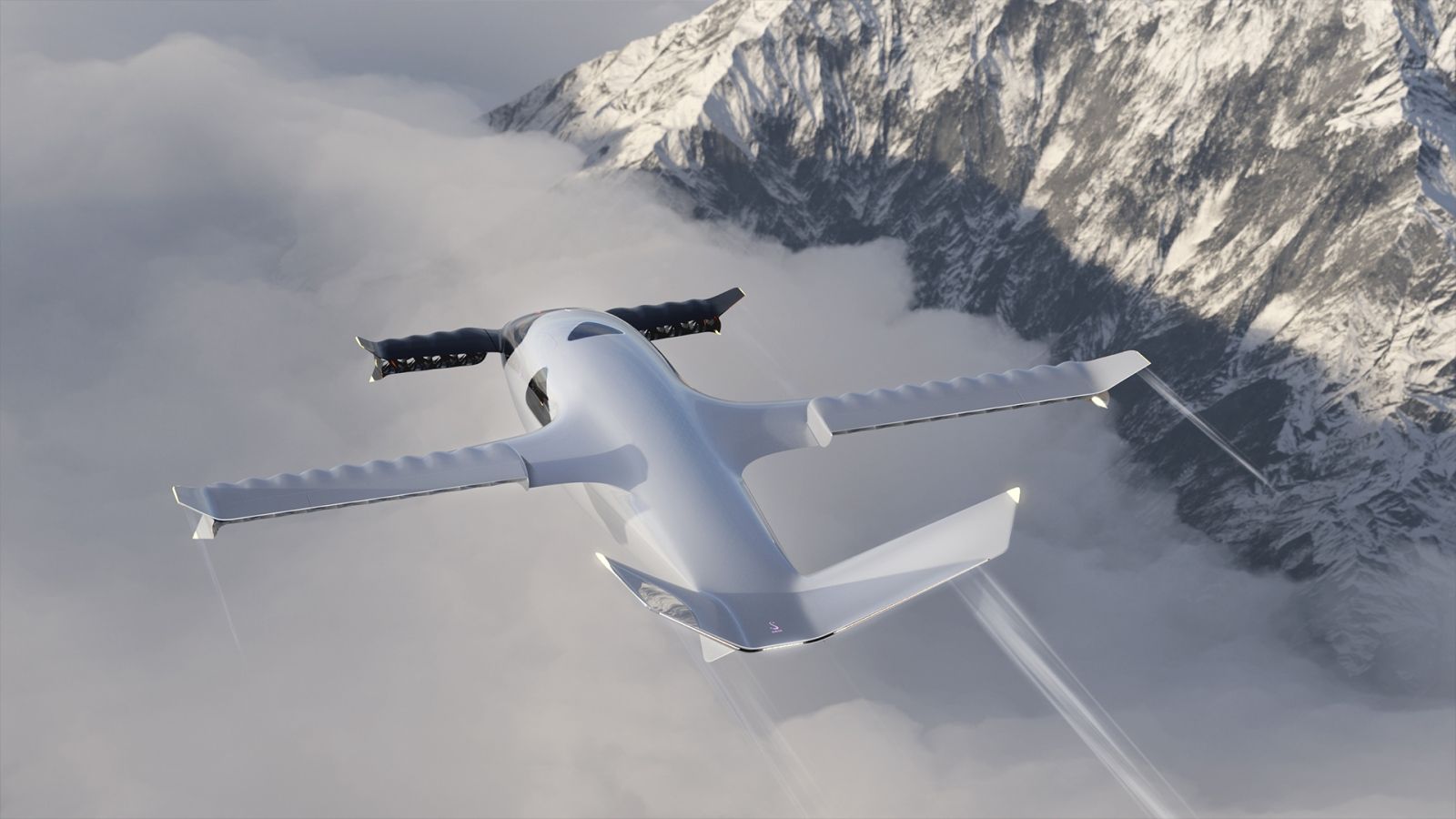
Let’s Re-Define Air Travel
Two years ago, Sirius Aviation, a Swiss startup with a firm belief in harnessing the power of hydrogen to combat climate change, approached us with the task of creating exterior, interior, and interaction design concepts for their liquid-hydrogen-powered high-performance VTOL jets. Under the leadership of CEO Alexey Popov, Sirius Aviation is poised to redefine air travel with its forward-thinking strategies.
“The technology we need is already at our fingertips. Leveraging hydrogen now is our best shot at tackling climate change head-on,” declares Popov.
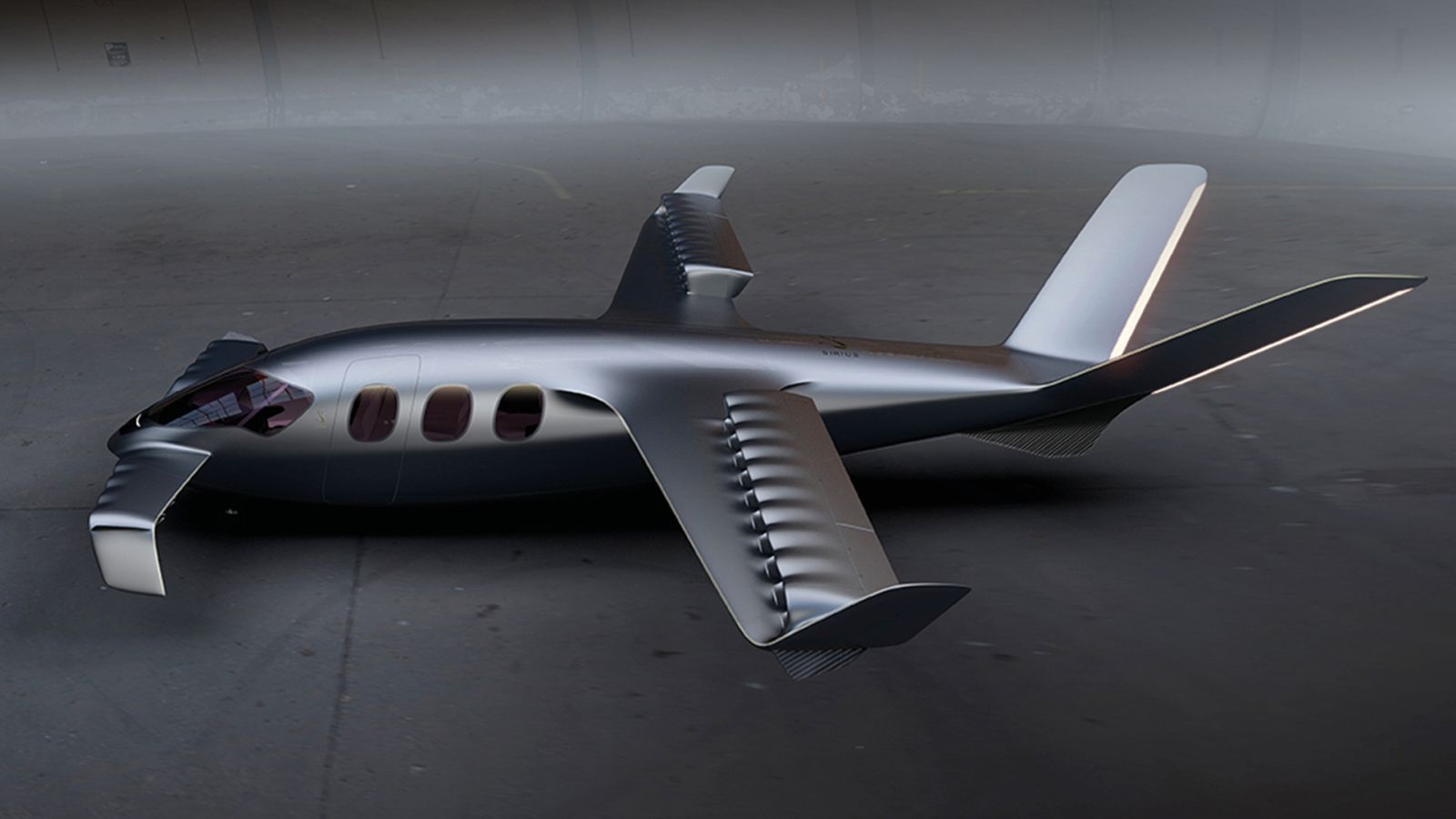
Sirius – the Brightest Star in the Sky
The Sirius Jet is a high-performance zero-emission VTOL aircraft, propelled by an innovative (and recently patented) hydrogen-electric propulsion system that combines jet aerodynamics with the versatility of airplanes and helicopters, allowing it to achieve extended flight distances, impressive speeds, and high altitudes. Its innovative systems and enhanced safety features enable near-silent, cost-effective, energy-efficient flights. Our designers were tasked with making the Sirius Jet’s trail-blazing spirit both visible and palpable.
“Designworks was the only company we ever considered as a design partner for this project, because we have a deep respect for its roots in aviation and its pioneering work with hydrogen,” says Alexey Popov.
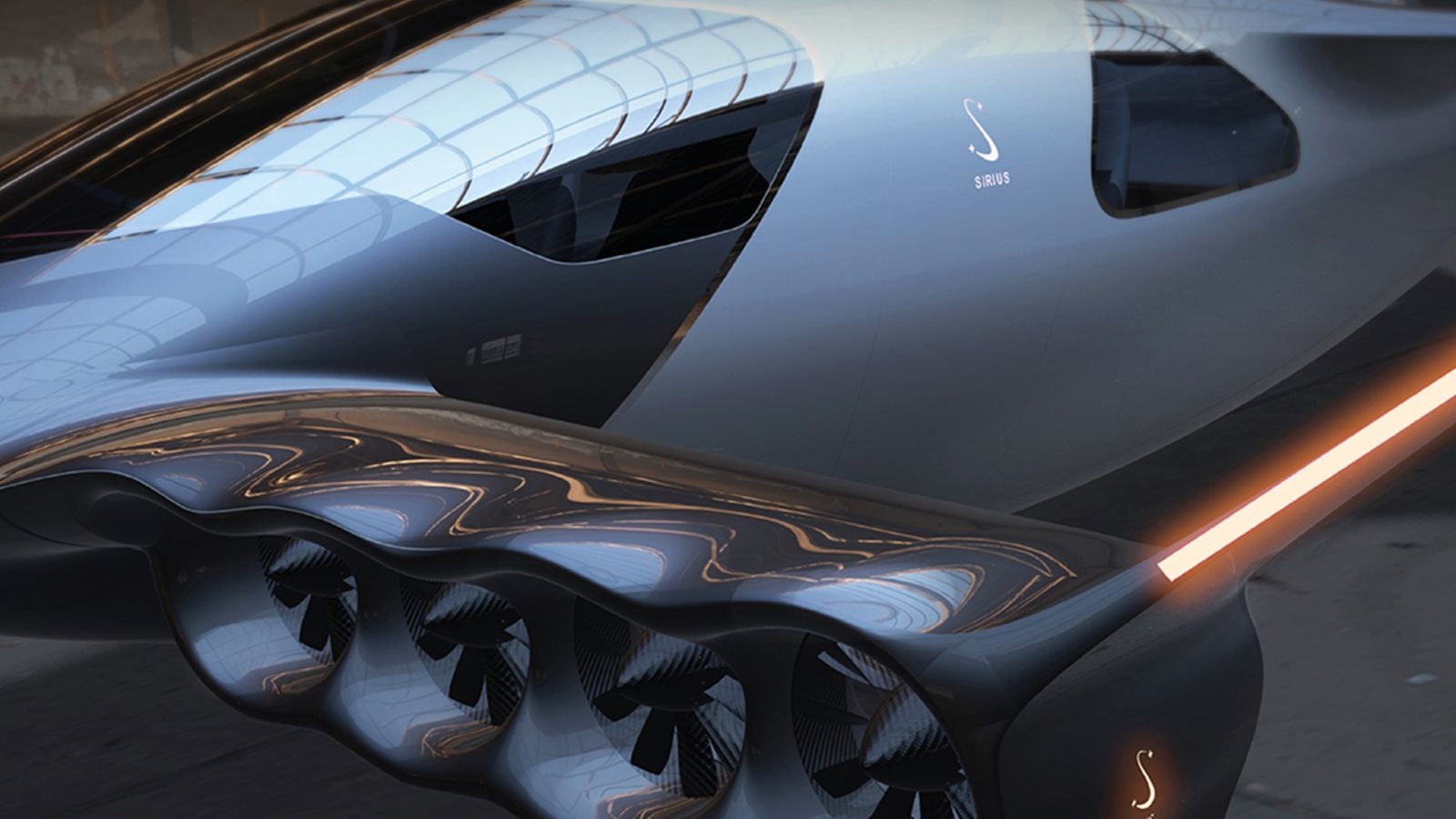
From a Passive Flying Experience to an Active One
Two of the major factors driving the design of this high-tech compact aircraft are weight and space. This means our team has to consider questions like, “At its most basic, the Sirius Jet is simply a lightweight cylinder – so how do you evoke a sense of spaciousness and comfort, a feeling of luxury and safety, while people are flying through the air in a hydrogen-powered tube? What kind of novel approach can we take to making this jet a celebration of both Sirius’ new technology and the joy of flight? And how do you create an interior design that provides the highest level of comfort and well-being while still keeping it lightweight.
“If design and strategy are implemented hand in hand, they can join to amplify the imagination of both the VTOL and hydrogen worlds.”
Tommy Forsgren, lead designer for the project at Designworks remarks, “Our goal in moving away from a comfortable – but passive – flying experience, was to make flights more engaging and exciting. In other words, to create ´an authentic aviation experience’ that reminds passengers why they chose air travel in the first place and highlights the real benefits of aviation.”
He adds, “At first glance, the interior of a jet might seem like a really restrictive environment. But with the right design concepts, it can be transformed into an extraordinarily uplifting sensory experience that is both intense and fun.”
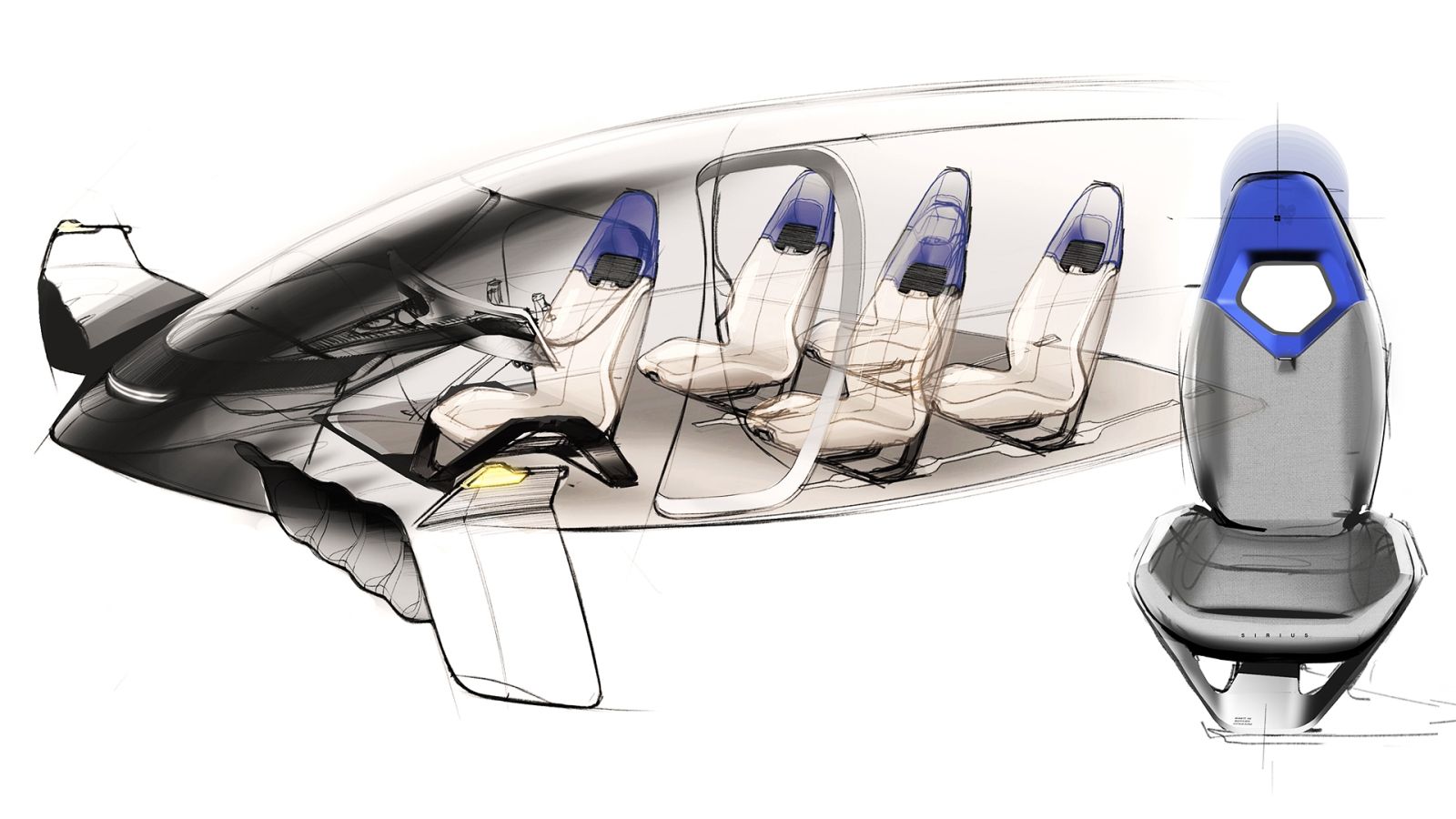
Designing for a Green Sky and a Bright Future
When asked what inspired the team’s concept for the jet’s exterior, Tommy Forsgren replied: “When one of the key drivers is to keep things lightweight, you often go back to familiar sources of inspiration, like nature – nature is always inspiring. With new technologies, though, there is now a huge amount of imagery involved in meeting the current mindset and creating modernity in aesthetics. As a designer, you kind of feel out the trends and try to create something that’s in keeping with the Zeitgeist but also goes a step further, something that will generate interest in what you’ve created and, especially in this case, make it very clear: Here comes a trailblazer.
Two Pioneers – One Vision
Given that hydrogen´s potential has been widely recognized for decades, why is it that no one came up with a solution sooner? “Simple!” says Alexander Popov: “Until recently, although almost everything we needed was already in place – two things were missing: adequate fuel cell performance and a market. In fact, three years ago, the hydrogen market simply didn’t exist. Over the past three years, the technologies have progressed at an incredible rate of speed and they’re growing exponentially. Added to that, at COP28 in Dubai, for the first time in history, humanity said ‘yes!’ to hydrogen. This was a major turning point for our industry. Just imagine where we can take this over the next few years! This is exactly what our teams are at work on every day – coming up with designs that will keep pace with all of these developments!
“It’s exciting to work on a new technology architecture that has the potential to revolutionize the entire jet industry.”
So, what´s next on the Horizon?
Sirius Aviation is planning the launch of the Millennium and the Business Jet by 2028, beginning with a demonstration model in 2025. With a quarter-century of experience designing, manufacturing, and certifying five aircraft, the Sirius team certainly has a deep understanding of the industry’s challenges. Paired with the pioneering mindset and robust partnerships that the company has established over the past several years, we have absolutely no doubt that Alexey Popov and his team will have their jets soaring through the air in 2028.
The design concepts for the exteriors of both jets were presented to the public in January. Currently, the design team at Designworks’ Munich studio is hard at work developing design concepts for the interior, the interactive features and the user experience.